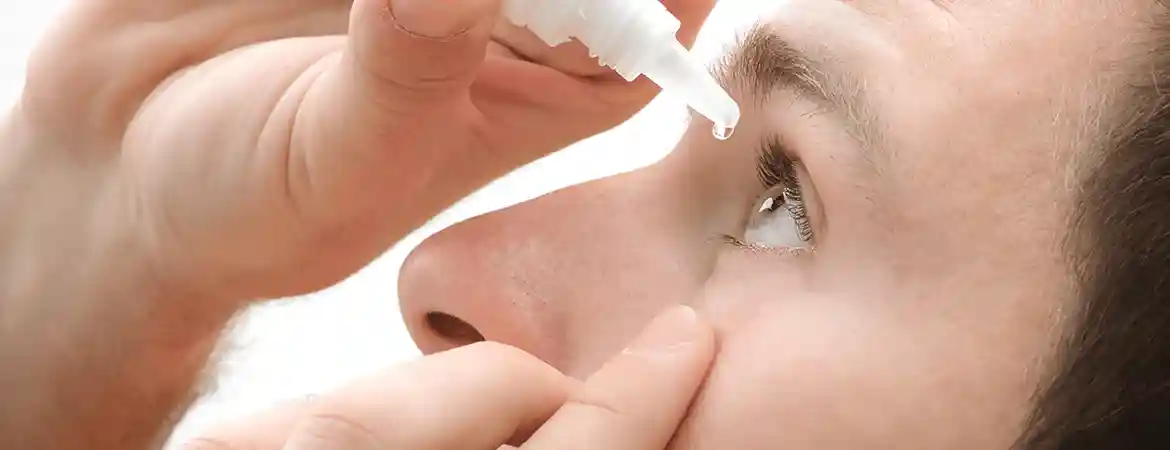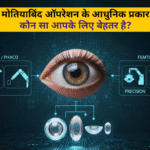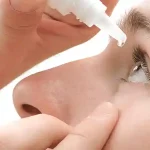LASIK is a widely used laser-based procedure to correct refractive errors such as myopia, hypermetropia, and astigmatism. While effective in reducing dependency on glasses or contact lenses, some individuals experience dry eyes after LASIK. This condition occurs due to a temporary disruption of the corneal nerves during surgery, leading to reduced tear production and eye discomfort.
The cornea is critical in maintaining eye moisture through nerve signals that regulate tear production. During LASIK, the corneal flap creation process severs some of these nerves, resulting in diminished feedback for tear secretion. While the nerves regenerate over time, patients may experience transient or prolonged dry eye symptoms.
Causes of Dry Eyes
The primary cause of dry eyes after LASIK is the interruption of corneal nerves during the corneal flap creation. This results in decreased sensation and a reduced reflex response for tear production. Other contributing factors include:
- Pre-existing dry eye syndrome: Individuals with dry eyes before surgery may experience worsening symptoms post-procedure. A preoperative assessment helps determine if a candidate is at higher risk.
- Changes in tear film stability: LASIK alters the ocular surface, affecting the composition and distribution of tears. The tear film, which consists of oil, water, and mucin layers, may become imbalanced.
- Inflammation: The healing process may trigger inflammation, impacting the tear gland function. Inflammatory cytokines may interfere with tear production and worsen dry eye symptoms.
- Meibomian gland dysfunction (MGD): Dysfunction of oil-producing glands in the eyelids can contribute to dryness by reducing the lipid layer of the tear film, leading to increased evaporation.
- Environmental factors: Exposure to air conditioning, screen time, and low humidity may exacerbate symptoms. Post-surgery, eyes may be more sensitive to external irritants, making hydration and protection essential.
Symptoms of Dry Eyes
LASIK dry eye symptoms vary in severity and may include:
- A gritty or sandy feeling in the eyes, as if there is a foreign body present
- Redness and irritation due to inadequate lubrication
- Burning or stinging sensation, particularly in dry or windy environments
- Blurry vision, especially after prolonged screen use, as the blinking frequency may decrease
- Sensitivity to light (photophobia), which may make it uncomfortable to be in bright environments
- Excessive tearing as a response to eye irritation, as the eyes attempt to compensate for dryness
- Difficulty wearing contact lenses post-LASIK, as dry eyes can make lens wear uncomfortable
These symptoms typically peak in the first few weeks after surgery and gradually improve as the corneal nerves regenerate.
Diagnosis for Dry Eyes
A comprehensive eye examination helps diagnose post-LASIK dry eye. Standard diagnostic tests include:
- Tear Break-Up Time (TBUT): Assesses tear film stability by measuring evaporation time. A short TBUT indicates tear film dysfunction.
- Schirmer’s Test Measures tear production using a strip of filter paper placed under the lower eyelid. This test helps determine whether the eyes produce an adequate amount of tears.
- Ocular Surface Staining: Uses dyes like fluorescein or lissamine green to detect dry spots on the cornea. These stains highlight areas of damage caused by inadequate lubrication.
- Meibomian Gland Evaluation: Assesses the function of oil-secreting glands in the eyelids. Poor gland function may indicate an underlying cause of evaporative dry eye.
Treatment for Dry Eyes
Several LASIK dry eye treatment options are available depending on severity:
- Artificial tears: Preservative-free lubricating drops help maintain hydration and soothe irritation. These should be used frequently, especially in the first few months after surgery.
- Prescription eye drops: Anti-inflammatory medications such as cyclosporine (Restasis) or lifitegrast (Xiidra) help improve tear production by reducing inflammation in the tear glands.
- Punctal plugs: Tiny silicone or collagen plugs are inserted into tear ducts to retain moisture and prevent excessive tear drainage.
- Serum eye drops: Autologous serum tears derived from the patient’s blood may be used in severe cases where standard treatments are insufficient.
- Moisture chamber glasses: Special glasses that help retain humidity around the eyes, preventing excessive evaporation of tears.
Remedies for Dry Eyes
In addition to medical treatments, several LASIK dry eye remedies can help relieve discomfort:
- Increase hydration: Drink adequate water to support tear production and prevent dehydration.
- Use humidifiers: Adding moisture to the air, especially in air-conditioned or heated environments, can prevent tear evaporation and improve eye comfort.
- Reduce screen time: Take breaks using the 20-20-20 rule (every 20 minutes, look at an object 20 feet away for 20 seconds) to prevent excessive eye strain and reduce blinking.
- Warm compresses: Apply a warm compress to the eyelids to stimulate oil secretion from the meibomian glands, improving tear quality.
- Omega-3 supplements: Consuming omega-3 fatty acids, found in fish and flaxseeds, may improve tear stability and reduce eye inflammation.
- Avoid irritants: Limit exposure to smoke, wind, and air conditioning, as these factors can worsen dry eye symptoms.
- Blinking exercises: Making a conscious effort to blink fully and frequently can help maintain a stable tear film.
Recovery & Management
Most cases of dry eyes after LASIK improve within three to six months as nerve regeneration occurs. However, managing symptoms effectively can enhance comfort during this period. Regular follow-ups with an ophthalmologist ensure timely interventions if necessary. Patients should adhere to post-surgical care guidelines, including:
- Using prescribed lubricating drops as directed
- Avoid rubbing the eyes, which can disrupt healing and worsen dryness
- Wearing protective eyewear in dry or windy conditions to shield the eyes from external irritants
- Following a balanced diet rich in antioxidants and omega-3s to support eye health
- Adopting a consistent eye care routine to prevent the recurrence of symptoms
When to See a Doctor for Dry Eyes
Consult an eye specialist if symptoms persist beyond six months or if there is:
- Severe discomfort affecting daily activities
- Persistent blurry vision that does not improve with artificial tears
- Increased redness or inflammation that worsens over time
- Lack of response to standard treatments despite adherence to prescribed therapy
- Any sudden or drastic changes in vision
Early intervention can help prevent complications and ensure a more comfortable post-LASIK experience.
Conclusion
Dry eyes after LASIK are a common but manageable post-operative concern. Understanding the causes, symptoms, and available treatment options can help individuals make informed decisions regarding their eye care. Early diagnosis and proactive management ensure long-term ocular comfort after LASIK surgery.
Ease post-LASIK discomfort and restore your eye health. Schedule a consultation with an eye specialist! Book Your Appointment
FAQs
Dry eyes are familiar in the first few months post-surgery and typically improve within six months. However, some individuals may experience prolonged symptoms requiring ongoing management.
While most patients recover fully, some may develop chronic dryness, especially if they had pre-existing dry eye syndrome before LASIK.
Combining artificial tears, prescription eye drops, punctal plugs, and lifestyle modifications can help manage symptoms effectively.
Yes, using warm compresses, consuming omega-3 supplements, staying hydrated, and limiting screen time can alleviate mild symptoms.
Frequently blinking spreads tears evenly across the eye, reducing dryness and irritation.





